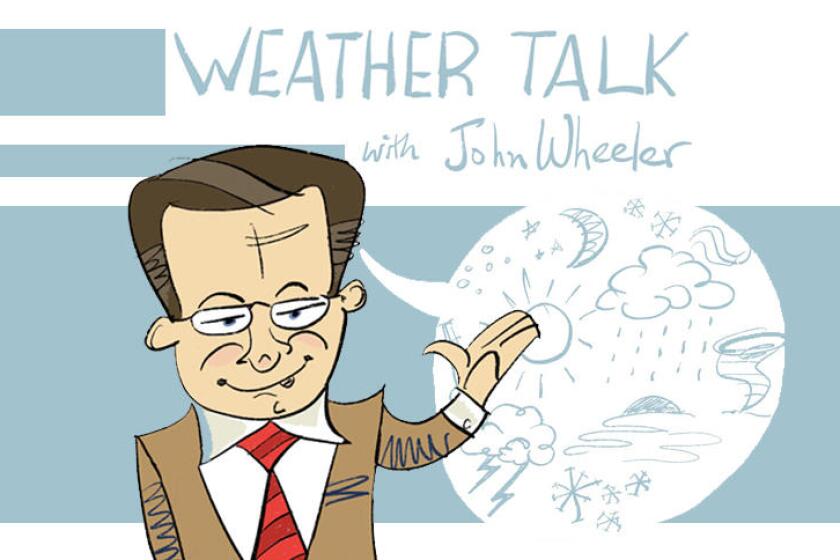John Wheeler: Very large hail is very rare

FARGO — Thunderstorms are caused by local columns of rising air called updrafts. Often enough, these updrafts strong are enough to overcome the force of gravity long enough to send raindrops up into the colder tops of the clouds where they freeze. Tiny hail usually melts on the way down but small hail (the size of peas or dimes or nickels) is a relatively common occurrence during summer. Very large hail is very rare. Nevertheless, almost every summer, we get a report of hailstones the size of baseballs or even softballs falling somewhere in the Dakotas or Minnesota.
Hail this big requires an updraft on the order of 100 mph. Such an updraft is difficult to maintain and so these super large hail stones are rare in any one location. The western Dakotas, in particular, often have dry air in the upper atmosphere which creates a cooler pool of air aloft, causing large hail more frequently.
John Wheeler is Chief Meteorologist for WDAY, a position he has had since May of 1985. Wheeler grew up in the South, in Louisiana and Alabama, and cites his family's move to the Midwest as important to developing his fascination with weather and climate. Wheeler lived in Wisconsin and Iowa as a teenager. He attended Iowa State University and achieved a B.S. degree in Meteorology in 1984. Wheeler worked about a year at WOI-TV in central Iowa before moving to Fargo and WDAY..









